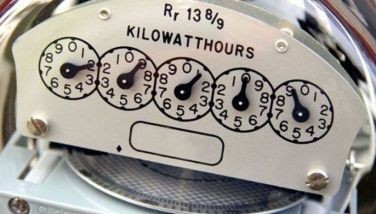CV inflation eases in August
CEBU, Philippines — Central Visayas' inflation rate has eased to just 3.4 percent in August this year, falling within the government’s target range of two to four percent.
This, however, does not mean prices are decreasing; rather, it indicates that prices are rising at a slower rate.
“There are commodities that have a slow increase in the inflation meaning the prices have a slow increase. But take note that there are also other commodities that have increased,” said Engr. Felixberto M. Sato, Jr. in a press conference yesterday.
“That is why we cannot say nga when it is increasing or decreasing, for as long as the government has its interventions… so that the inflation would be stabilized,” added Sato, a Philippine Statistics Authority (PSA)-7 supervising statistical specialist.
Sato said the August inflation rate is much lower than the 4.5 percent recorded in July and the 4.1 percent observed in August last year.
Sato said the year-to-date inflation rate for the first eight months of 2024 is at 3.6 percent.
“When we say inflation, this is the rate of increase in the prices of commodities and services,” he said.
He also said the same is also true for the provinces in the region, with Bohol having the lowest inflation rate of 2.9 percent; Negros Oriental, 2.7 percent; Cebu, three percent, which is lower compared to the 4 percent in July; and Siquijor, 3.1 percent.
Meanwhile among the highly urbanized cities (HUCs) in the region, Lapu-Lapu City and Mandaue City registered an equal inflation rate of 5.6 percent, while Cebu was at 4.8 percent. All of these cities recorded lower inflation rates this August compared to the month of July.
Sato said the decrease in overall inflation for August was mainly due to the slower increase in food and nonalcoholic beverage prices, which rose by 5.8 percent in August compared to 8.6 percent in July, accounting for a 58.1 percent share of the downward trend.
In addition, the second major factor contributing to the slowdown was the transport sector, which saw a 5.5 percent increase, or 38.3 percent in the trend.
“Taking into consideration that the fuels, the gasoline also decreased or slower in increase. It was taken into consideration also the fare and includes also the prices of fuels,” Sato said.
Rice remained the biggest factor in the overall inflation rate, accounting for 1.1 percentage points and 37.7 percent of the overall contribution to inflation.
Prices of rice rose more slowly, with the inflation rate dropping from 19.4 percent in July to 13 percent in August.
Aside from rice, the other top contributors on the August 2024 inflation includes rentals with 6.6 percent; corn with 30.6 percent; restaurants at 3.6 percent; meat and others with 9.3 percent.
Sato said several non-food items experienced higher annual price increases.
He identified the following commodity groups which logged a higher inflation rate: Housing, water, electricity, gas and other fuels (from 0.3 percent in July to 3.5 percent in August); Information and Communication (from 0.4 percent in July to 0.6 percent in August); and Education Services (from 4.9 percent in July to 7.2 percent in August).
Sato also reported that the was a significant drop in food inflation for August 2024, as it slowed to 6.2 percent from 9.1 percent in July.
This was primarily due to a more modest year-on-year increase in the prices of cereals and cereal products, which rose by 14.4 percent.
Other factors that helped ease food inflation, included a decline in the prices of fish and other seafood, which recorded a -6.3 percent change. Vegetables, tubers, and plantains also saw a slower price increase of 6.9 percent.
Meanwhile, the inflation that was felt by the “bottom 30 percent” income households also eased to 5.2 percent from 7.7 percent, bringing the average rate for the income class from January to August to 4.8 percent.
Similarly, the slowdown in inflation for the bottom 30 percent class was brought about by the lower growth in food and non-alcoholic beverages at 7.3 percent, transport at -8.2 percent and housing, water, electricity, gas and other fuels, at 6.8. — /RHM (FREEMAN)
- Latest

























